TEXT AND PHOTOGRAPHS BY AANCHAL MALHOTRA
Toronto, Canada and New Delhi, India
My maternal grandmother passed away before I was born and I’ve spent much of my adult life trying to get to know her through stories and photographs. And while it isn’t the same thing as spending time in person, she seems to come vibrantly alive in the memories of others. Their face takes on a faraway look before it breaks into a smile and they begin to recall how beautiful and stylish she was, how elegantly she carried herself, her skills as a seamstress, the impeccable organization of her house. This posthumous acquaintance of ours has led me to dream about her, write about her through second-hand memory and even dedicate books to her.
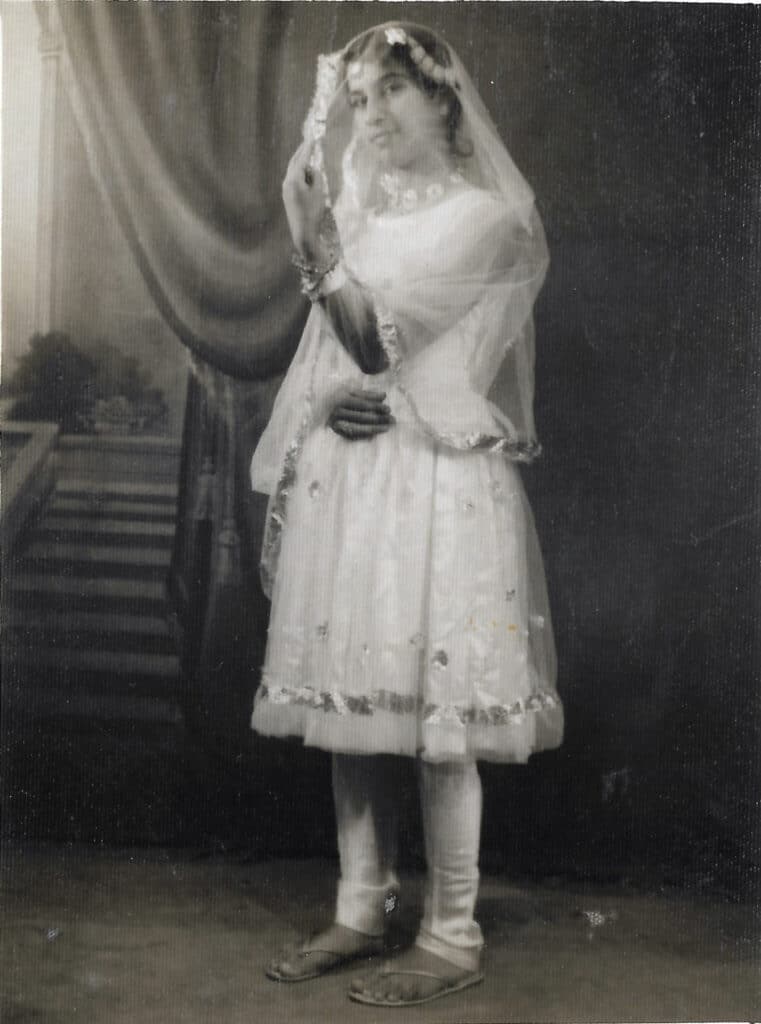
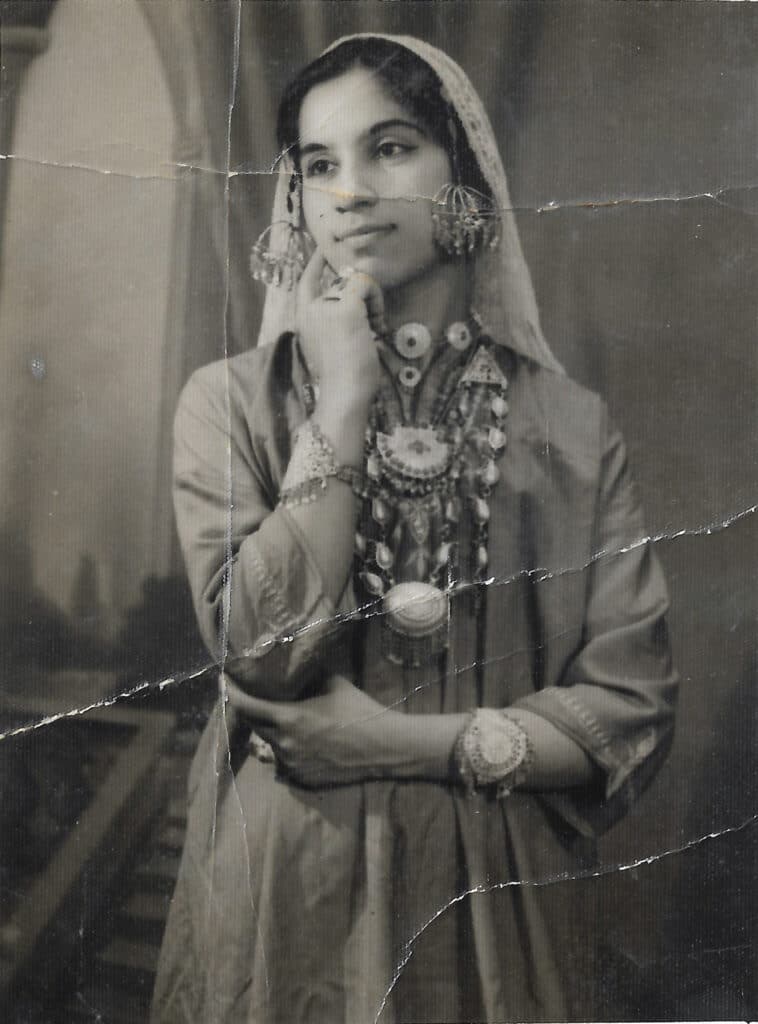
A young Amrit posing at a photo studio in Delhi
Amrit Bery was born in 1939 in the Machhi Hatta Bazar area of Shah Almi Gate, Lahore. She was the fourth of seven siblings, and attended the Sacred Heart school in Anarkali, across which was the first branch of Punjab National Bank that her grandfather had actively taken part in setting up. In June 1947, riots in the city of Lahore saw their neighbourhood set ablaze, and in July, the family took the night-long train across Punjab and then travelled by bus for four and a half hours further to the hill station of Shimla. Amrit would have been just eight years old at the time. The Bery family stayed in Shimla from July till end October, and in their absence, Partition happened and Lahore fell on the Pakistani side. On 1 November 1947, they finally migrated to Delhi.
In April 1964, she was married to my grandfather, Vishwa Nath Vij, who had been living in Toronto since the 1950s. The families knew each other from their Lahore days, which is why the alliance was made in the first place. At the time, he was working as a production manager at the Beecham Group, a British pharmaceutical company, and she was working as a stenographer for Pfizer on Asaf Ali Road. Her style even then, her sister remembers, was unmatched – she’d wear freshly starched saris Monday through Friday.
After the wedding, my grandfather returned to Canada and my grandmother followed him in June. Photos from her life there show her in everything from skirts to saris and dress pants. Her coats are effortless fitted, she wears cat-eye glasses and knitted sleeveless turtlenecks. She has her hair expertly done up in bouffants and French twists, and some years it’s cropped short with bangs. There is a natural elegance to the way she carries herself.

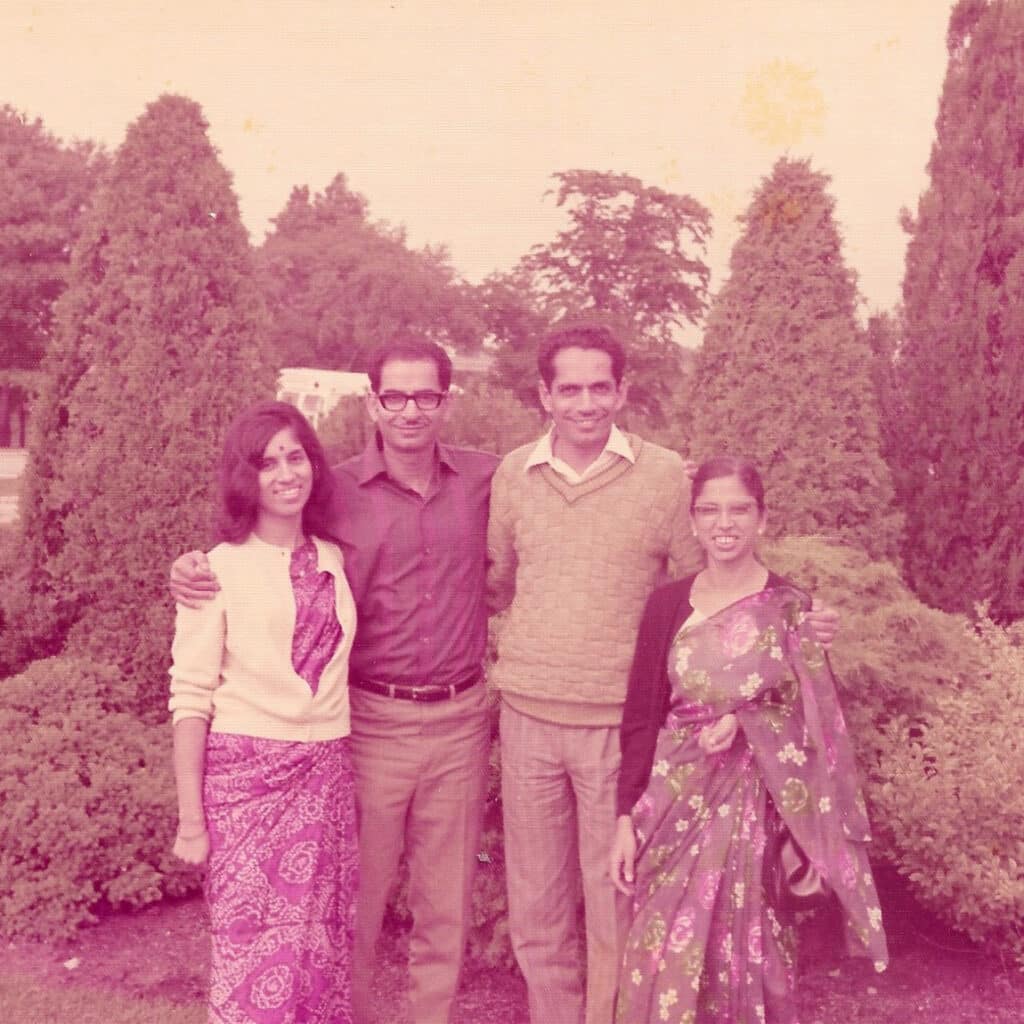

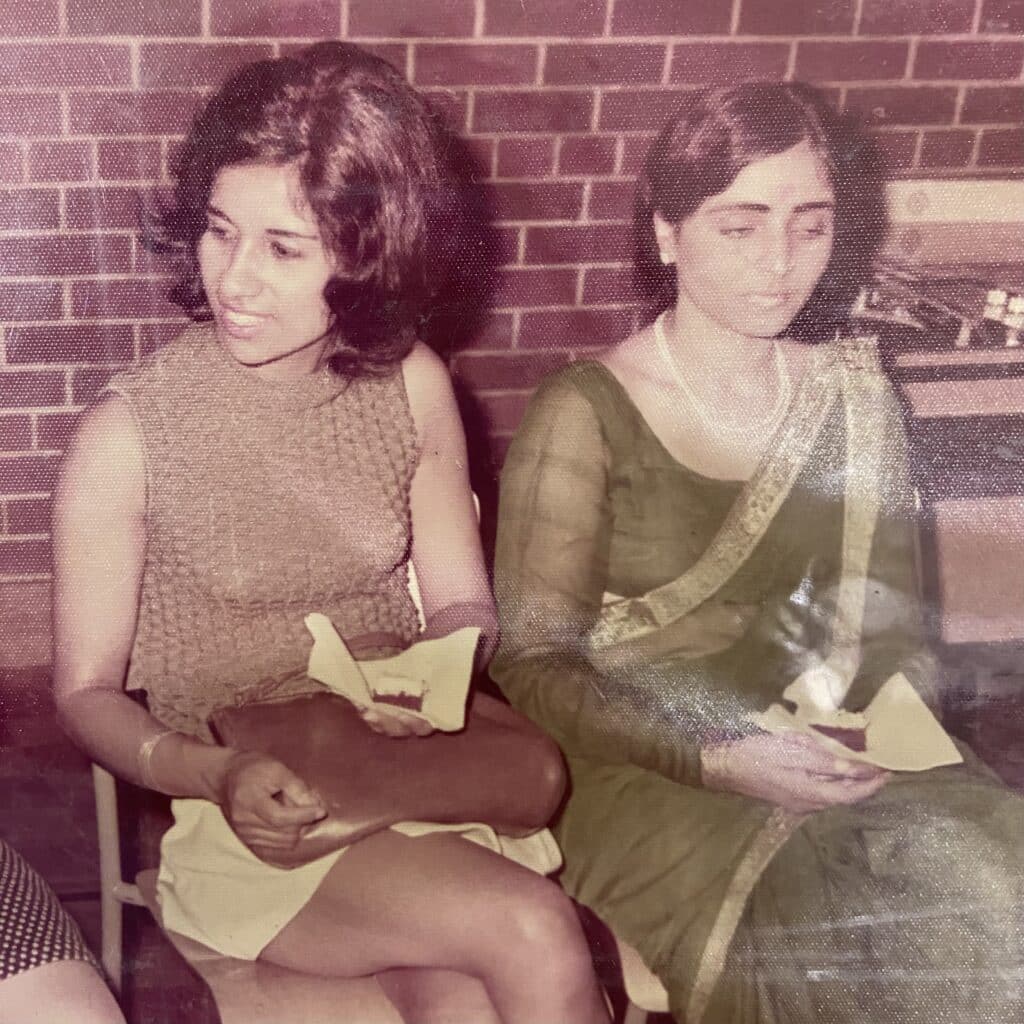
Last year, my mother gave me a carnelian-coloured brooch from Avon, circa 1970, that used to belong to her mother. It is set in an ornate gold frame and measures nearly 2 by 1.5 inches, and weighs in your palm. It was in a cardboard box labeled Simpson’s, one of the two early competitors of the department store in Canada, the other one being Eaton’s. These buildings stand across from each other on Queen Street in Toronto, and I’d pass them almost everyday when I lived there.
I’d always known that my grandmother used to be an Avon Lady, which meant that there were always cosmetic samples in my grandparents’ home – I particularly remember the set of 24 tiny white lipstick samples in a teal plastic box, that my mother still had when I was child – but I never knew what being an Avon Lady entailed. Vintage advertisements show elegantly dressed women, box bag hanging from their shoulders, standing on a porch, set against the slogan “Avon Calling”.
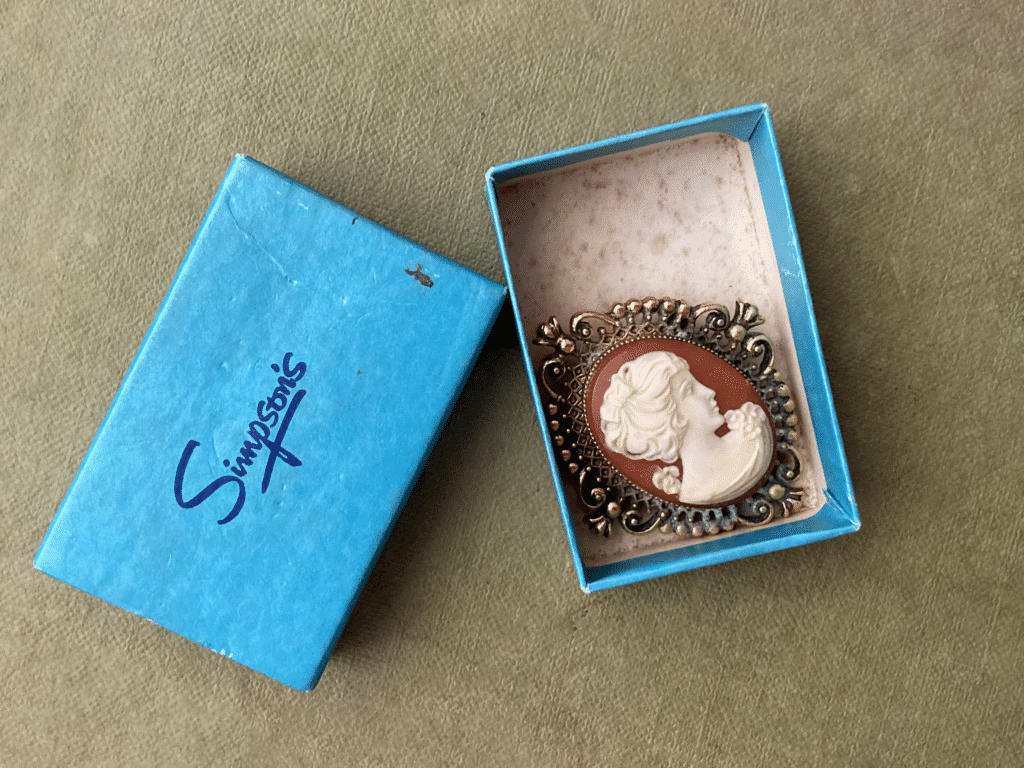

The Simpson’s carboard case with the perfume locket / Shopper’s crossing between Simpson’s and Eatons, Toronto, 1910
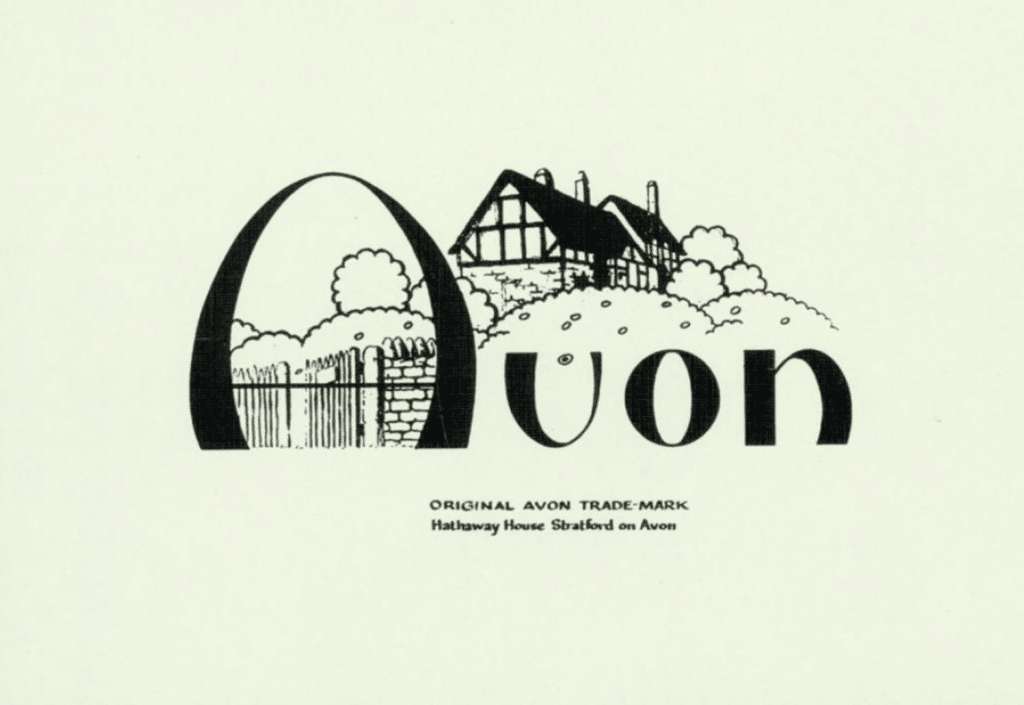
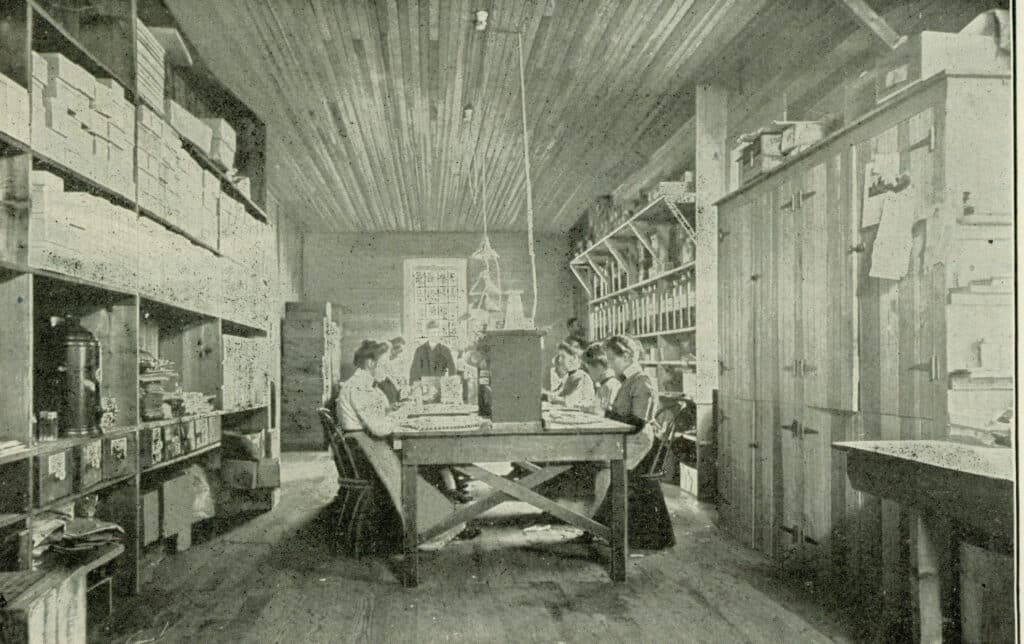
Images from the Avon Historical Archive at the Hagley Library – Original Avon Trademark, used from 1929 until about 1936/ Avon workers bottling perfumes, 1902
The idea of this door-to-door service came in 1886 from David H. McConnell, a traveling book salesman from New York, who used perfumes to interest his female customers into speaking about books, but noticed that the perfume actually became a bigger hit. Soon, he had enlisted a largely all-women sales force that went door to door selling fragrances [expanding to cosmetics and jewellery] under the company name ‘California Perfumes’. It was changed to ‘Avon’ in 1928, after the birthplace of McConnell’s favourite playwright, Shakespeare.
As a young mother with one child at primary school and the other at home, Avon gave my grandmother a way to work from home, as it were. They used to live in an apartment building in Etobicoke, and she would do her rounds each week after dinner from 6-8 pm. Her sister tells me that Avon Ladies worked on a 40% commission for a three-week cycle, knocking on people’s doors, showcasing their products, collecting orders, and the shipment would come in on the 4th week. From 1970 to 72, Amrit worked with Avon, her earnings contributing in part to the down payment of their first home.
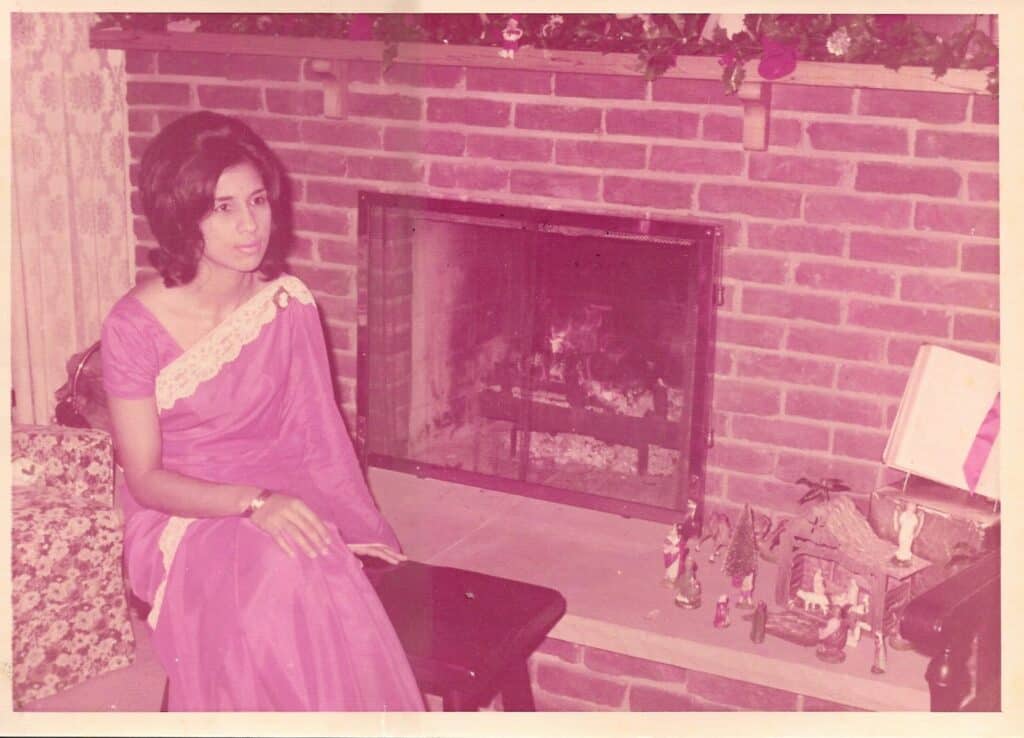
Amrit at a family friends’ Christmas dinner wearing the perfume brooch on her left shoulder
The fact that she is wearing the brooch only confirms that Avon Ladies not only sold their products, but also regularly used and wore them. My grandmother’s sister who immigrated to Canada in the 70s remembers that the Avon Ladies were always very smartly dressed, wearing perfumes, hand-creams and signature jewellery. I ask if her sister’s sense of style came from this job, but she corrects me to say that it only added an extra element to her already stylish self.
At first glance, the brooch looks like a common Victorian one, but upon playing around with it, I realised it’s actually a locket. It opens with a distinct click to reveal a solid perfume on one side, and an engraved ‘Avon’ on the other. The perfume is still intact, covered by a thin film of butter paper, but it smells only paper-like and waxy now.

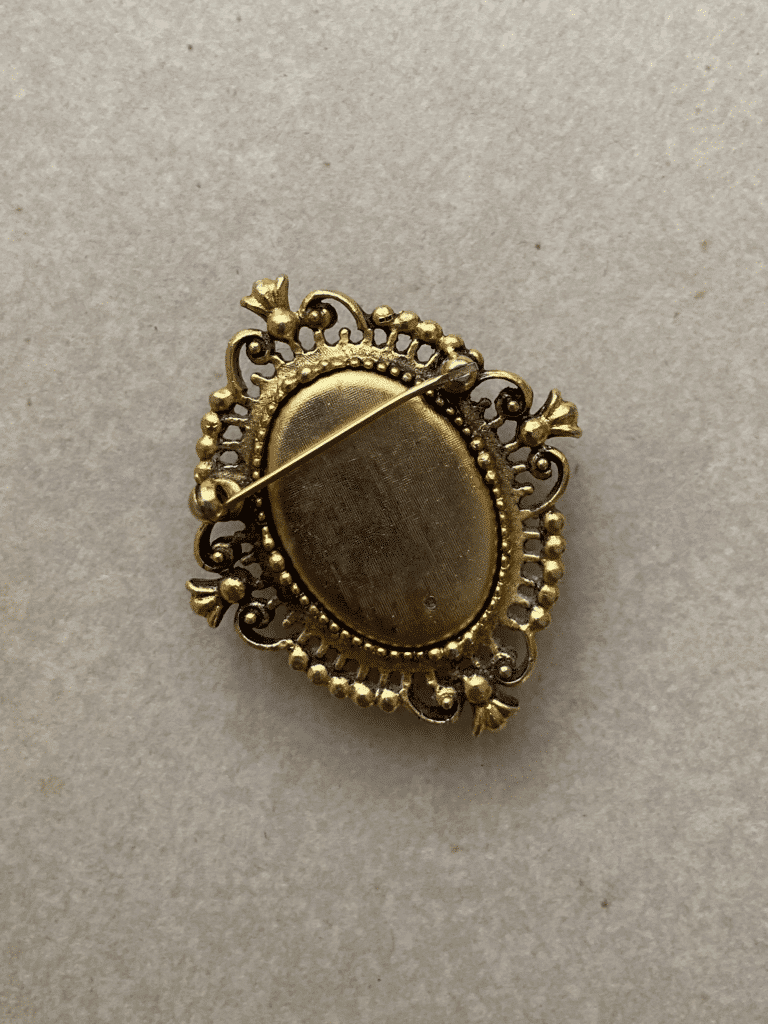
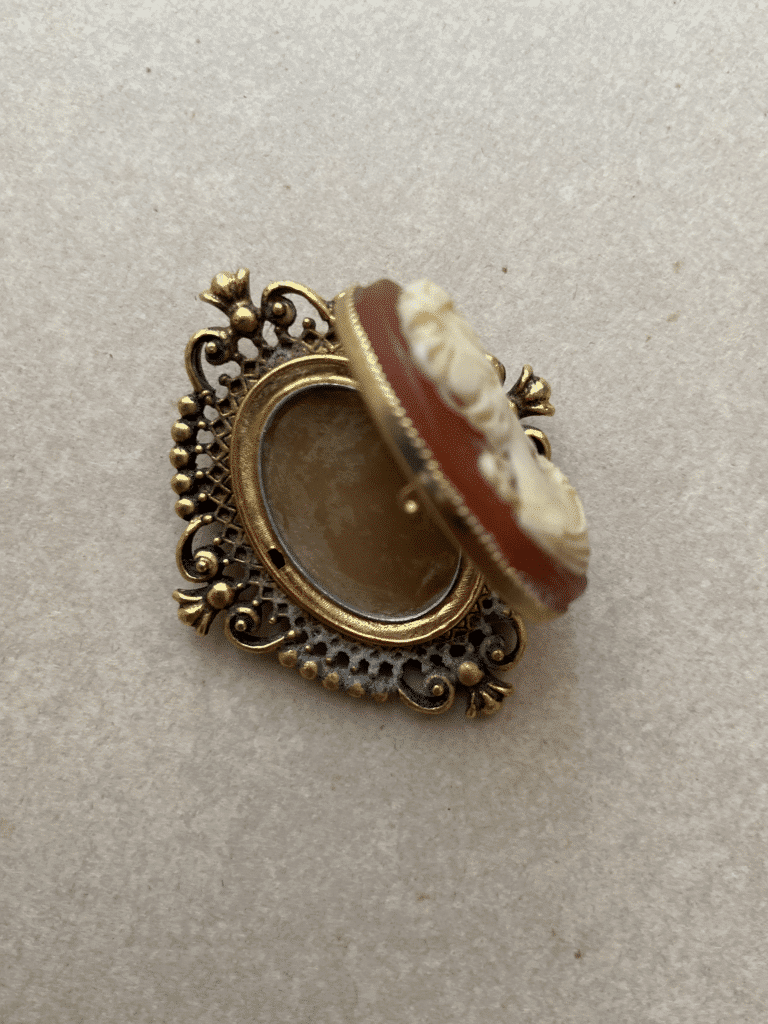
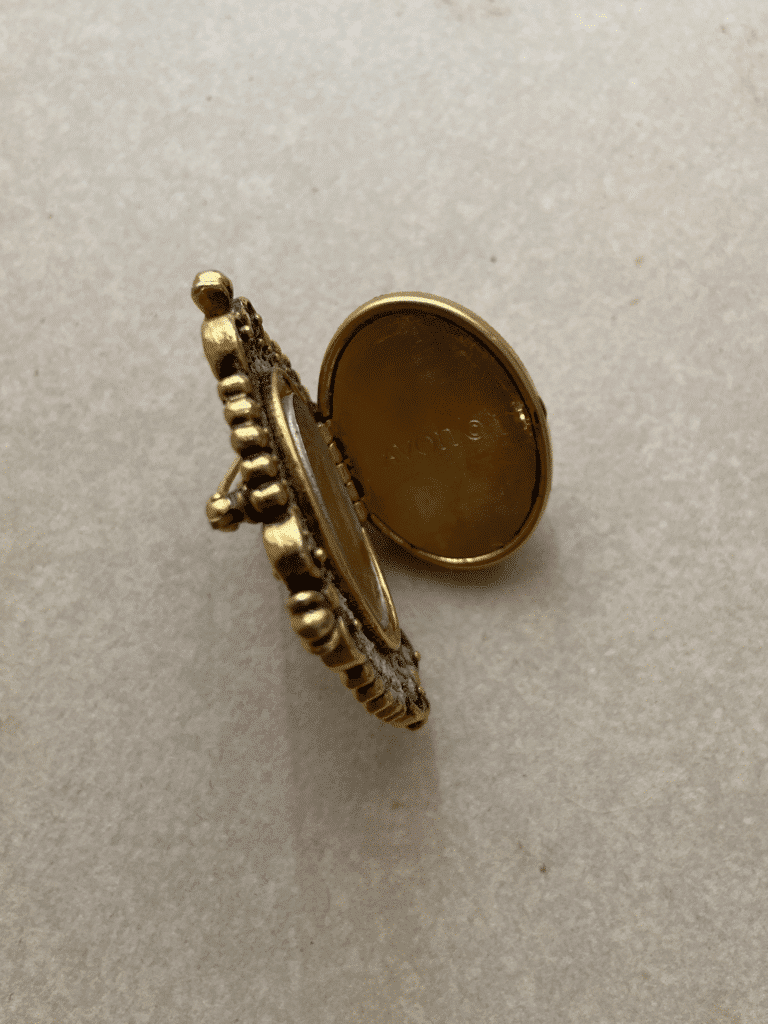
The perfume used inside was called Elusive and oddly enough, is compared to India in its promotional material – “Avon’s indefinable fragrance that makes a woman as mysterious as India itself. Tantalizing. Irresistible. With the spirit that makes words a poem, melody, a song. Elusive. Above a place. Above a time.”
There are so many questions I would have asked my grandmother that I end up asking her sister today – about her life in Canada, the various jobs she did, her dreams, her memories. It breaks my heart sometimes that I never had the chance to be her granddaughter. To that end, this perfume brooch is just another object in her collection that make me feel closer to her. My mother was always told that she had the same hands as her mother. And so while the brooch no longer emits any fragrance, through my mother, I imagine Amrit clicking it open, running her forefinger over the perfumed wax and rubbing it into her skin.
